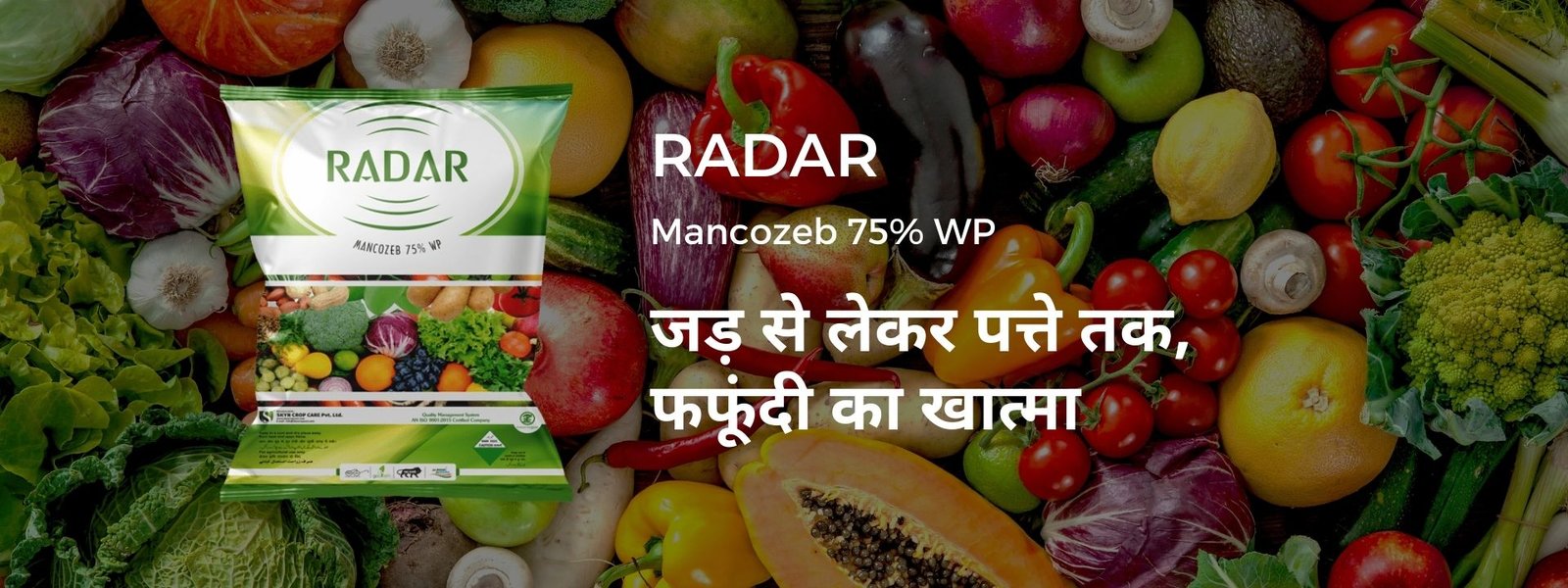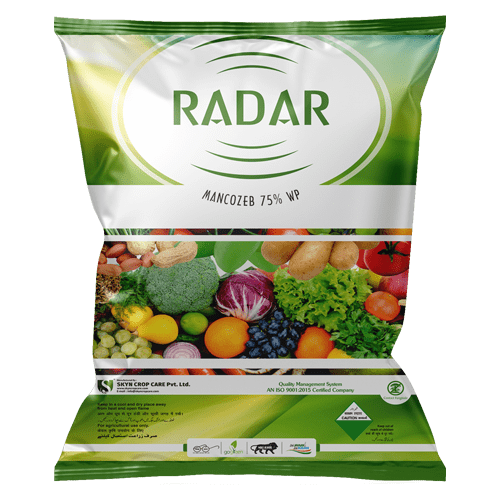
It is a broad-spectrum fungicide with protective action. The product is fungitoxic when exposed to air. It is converted to an isothiocyanate, which inactivates the sulphahydral (SH) groups in enzymes of fungi. Sometimes the metals are exchanged between mancozeb and enzymes of fungi, thus causing disturbance in fungal enzyme functioning.

Special Features
-
- King of all Fungicides: Broad spectrum fungicide, which controls a large number of diseases (with its multisite action), caused by Phycomycetes, advance fungi and another group of fungi infecting many crops.
- Wide Spectrum of Use: Used for foliar sprays, nursery drenching and seed treatments in many crops.
- No Disease Resistance: RADAR can be used repeatedly, without any danger of resistance development, for a number of years.
- Ideal Tank Mix Partner: Best fungicide to be used along with systemic fungicides to prevent and/or delay resistance development.
- Provides Nutrition: In addition to disease control, it also provides manganese and zinc in traces to crop, thereby keeps plants green and healthy.
- Environmentally Safe: RADAR is quite safe to natural enemies and the environment. Thus part of Integrated Disease Management.
- Economical: As compared to other fungicides, it is less expensive in the long run on account of nutritional benefits and superior crop protection, which results in high yields and better quality.
Application
For better disease management, it is always advisable to remember the maxim – Prevention Is Always Better Than Cure. Generally, the sprays of RADAR should start before the appearance of disease or at disease initiation. Repeat the applications at 7-12 days interval depending on climatic conditions and disease severity. The general recommendations on various crops are given below, but it is advisable to use the product as per the local recommendations of agricultural institutes.
General application rate for the foliar spray is 200-250 grams per 100 liters of water. Water volume ranges between 500 to 1000 liter per hectare based upon crop type and crop stage. For seed treatment, a general recommendation is 2.5 g/kg seed. Tubers or rhizomes are recommended to be dipped for a minimum 20-30 minutes before sowing @300g per 100 liters. It is advised that the user must read the label and leaflet attached to the container for details.
| Crop | Diseases | Dosage (g/acre) | Time of Application |
|---|---|---|---|
| Rice | Blast | 600-800 | First, spray at the appearance of the disease symptoms.
Repeat it at an interval of 7 to 10 days, if required. |
| Wheat | Brown & Black Rust | 600-800 | |
| Potato | Early & Late Blight | 600-800 | |
| Tomato | Early Blight, Leaf Spot | 600-800 | |
| Groundnut | Tikka & Rust | 600-800 | |
| Grapes | Downy Mildew, Anthracnose | 600-800 | |
| Chilli | Fruit Rot, Leaf Spot | 600-800 | |
| Banana | Sigatoka leaf spot | 600-800 |






